Saving a Motherboard from Capacitor Plague
I assembled my office desktop using a
Tyan
S2895A2NRF (aka K8WE Thunder) motherboard in 2006. In terms of features
and performance, it is still an outstanding workstation motherboard. The
dual Opteron 275s with
Alpha PAL8150
heatsinks run cooler and faster than 2009 Xeons. I get better SATA
bandwidth with 1TB Seagate disks than on DL160G5 servers.
In terms of component quality, however, Tyan got unlucky.
Yes, capacitor
plague is real. In mid-2011, one day I had to reboot my desktop.
The motherboard never got into POST. I jabbed the power button,
thinking I had shut down instead of restarted. The fans spun for four
seconds, then it was lights out. This happened every time I jabbed
the power button.
In contemporary culture, the normal reaction would be to order a
new PC. The S2895 uses 400MHz DDR RAM, and the Opeterons and
heatsinks are Socket 940 vintage, so it is hard to reuse anything
except the cabinet, disks and power supply.
The only way to reuse everything else was to try to find a
replacement motherboard that is either the S2895 again (very likely
with more bad caps) or a close match. So I sent a couple of emails to
IIT's rate
contract vendors, asking if they can locate one among a small list
of ancient motherboards. One of them had supplied my original
motherboard. I also asked an outside vendor.
Then I started reading more about capacitor plague on the Web.
Armed with a magnifier, I found the clues: five caps with their tops
bulging and one that was rising up from the PCB. I also
found BadCaps.net, which ships
high-quality (low ESR) caps worldwide. I ordered 5USD worth of
replacement caps (with some extras) and shipping was 1.37USD.
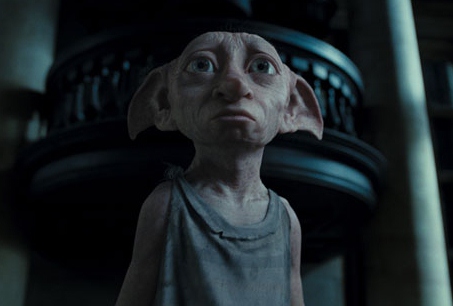 Digression: I know the rate contract vendors are not under any
agreement to supply items not on rate contract. Nevertheless,
interacting with them can be a drag. They do not reply to email, need
several reminders for small items, and need dozens of telephone
reminders for big items ("are you sure you need it"?) before they
respond, if ever.
Digression: I know the rate contract vendors are not under any
agreement to supply items not on rate contract. Nevertheless,
interacting with them can be a drag. They do not reply to email, need
several reminders for small items, and need dozens of telephone
reminders for big items ("are you sure you need it"?) before they
respond, if ever.
The message is clear: they are after crores worth
of purchases and cannot be bothered by your piddling 50,000INR worth
of business. So I was overcome with gratitude on finding BadCaps.net.
I could not believe that just by clicking a few links and typing in my
PayPal ID, I could get caps shipped all the way to India.
Like
Dobby, I almost broke down
weeping when I realized that there are nice people across the world
that would actually want to do business with me. Insignificant
lowly me. Imagine! Eventually,
only the outside vendor replied, quoting 30,000INR (about 800USD) for
an approximate replacement.
The new caps arrived within a week; fortunately India Customs was
after bigger game while my caps snuck into the country.
I have had an IBM R32 inverter and some other small items stuck in Customs
for ever and lost, so this was lucky.
The nice part about this adventure was that I could keep reminding
myself: "What do I have to lose? I was going to toss that motherboard
anyway." I heated the PCB pads and pulled out the legs by successive
iterations in about 4 passes over each cap. I used a 35W iron which
is more power than needed. If you are experienced in soldering and
desoldering, you know that a high wattage iron touched to the pads
very briefly is better than a low wattage iron touched for longer.
After the caps were out, I used a hypodermic steel needle to clean
up the holes. So that was three heating cycles per pad. The fourth
and last heating cycle was used to solder the new caps on. It is
important to heat the PCB vias well and use gravity to let the solder
flow into the hole.
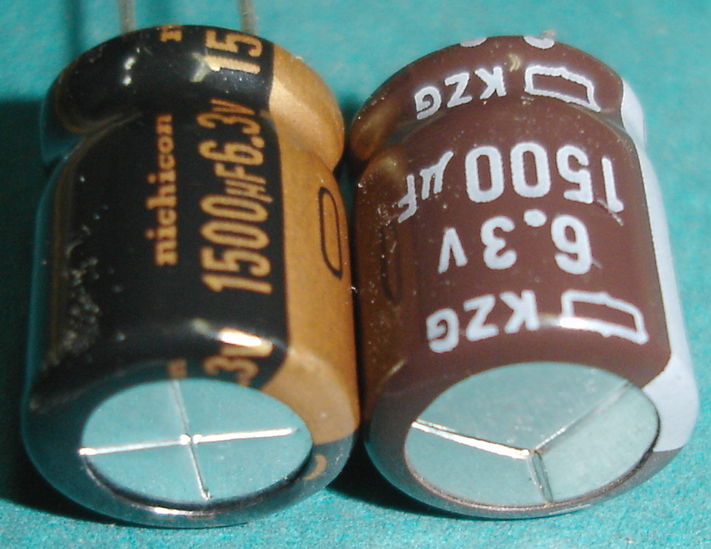
Clear swelling of the old cap. Lucky no leaks yet.
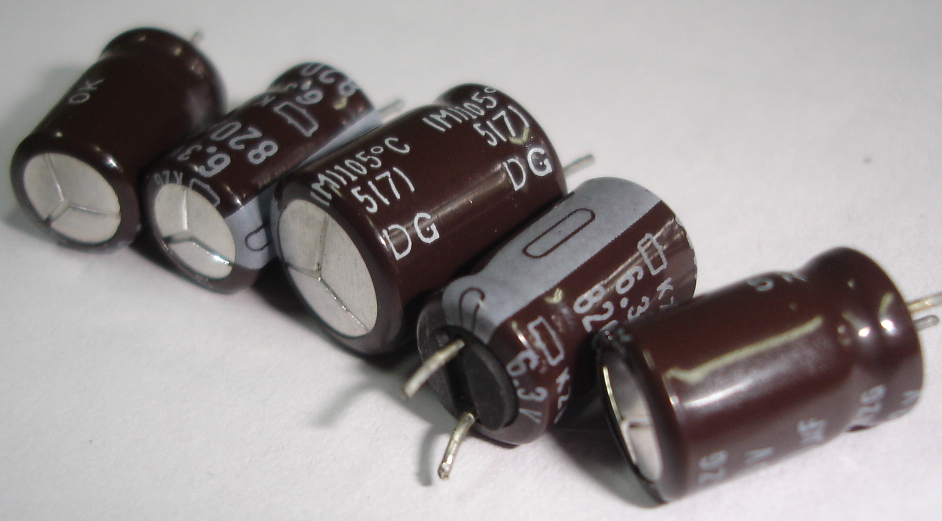
All the pulled teeth on exhibit, all
swollen at the top, one with the rubber base being pushed out.
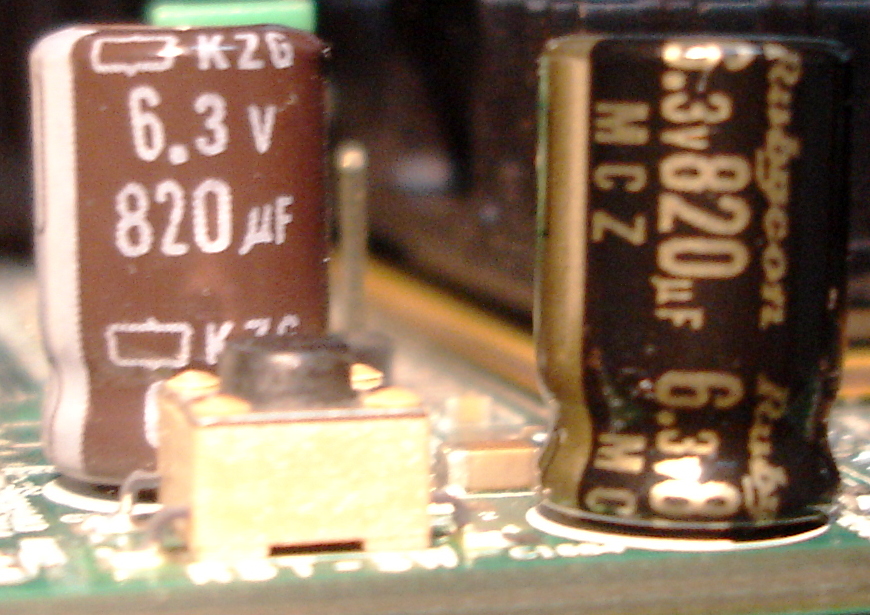
An old (not yet dead) "KZG" cap neighboring a new Rubycon MCZ cap.
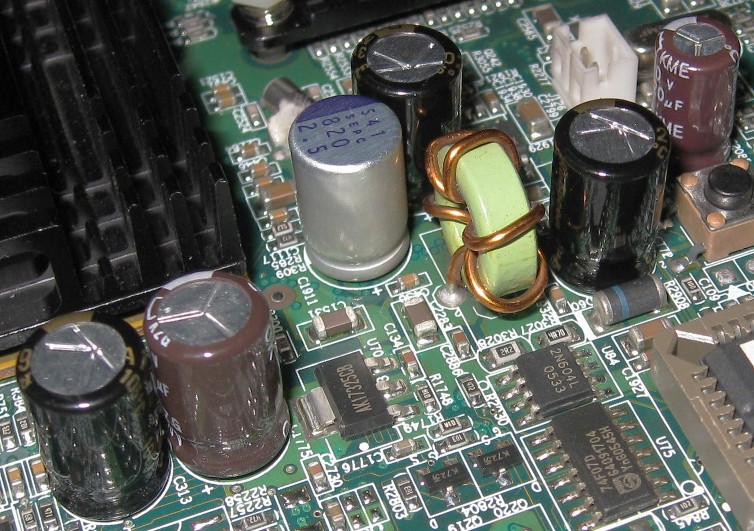
Old (brown) and new (black) caps.
Hopefully the surviving brown ones won't blow tomorrow!
So I finished up and clipped the excess leads, reconnected the
power supply, and ... bingo! the board powered up as if it had no hint
of the lobotomy in between! Yoohoo!
I have no idea how long it will last, as other caps may go bad, or
other non-cap parts may have been damaged already. But even if it
takes me to the end of 2011, at 6.37USD for a board that would take
800USD to replace, that's not bad at all. The whole job, including
ordering the caps, took me under two hours. Luckily, I am not so busy
and successful that I cannot afford two hours of repair time after
using a motherboard for five years.
A problem was identified, caps were
ordered from the USA and delivered in India, suspected caps were
removed and new caps installed, and the unit restored to health, all
before local motherboard vendors could so much as reply to an email
inquiry. Why are Indians too busy to get any work done?
PS: Thanks to Sasidhar for some of the photos.
Update: Made it to the end of 2012!
Update: Made it to the end of 2013!
Obituary: Made it to the end of 2016! Died a few
days into 2017. Would not power up at all. No visible bad caps.
The board lasted from summer 2006 to the end of 2016, over ten
years, with the above repairs made in mid-2011.
 Digression: I know the rate contract vendors are not under any
agreement to supply items not on rate contract. Nevertheless,
interacting with them can be a drag. They do not reply to email, need
several reminders for small items, and need dozens of telephone
reminders for big items ("are you sure you need it"?) before they
respond, if ever.
Digression: I know the rate contract vendors are not under any
agreement to supply items not on rate contract. Nevertheless,
interacting with them can be a drag. They do not reply to email, need
several reminders for small items, and need dozens of telephone
reminders for big items ("are you sure you need it"?) before they
respond, if ever.